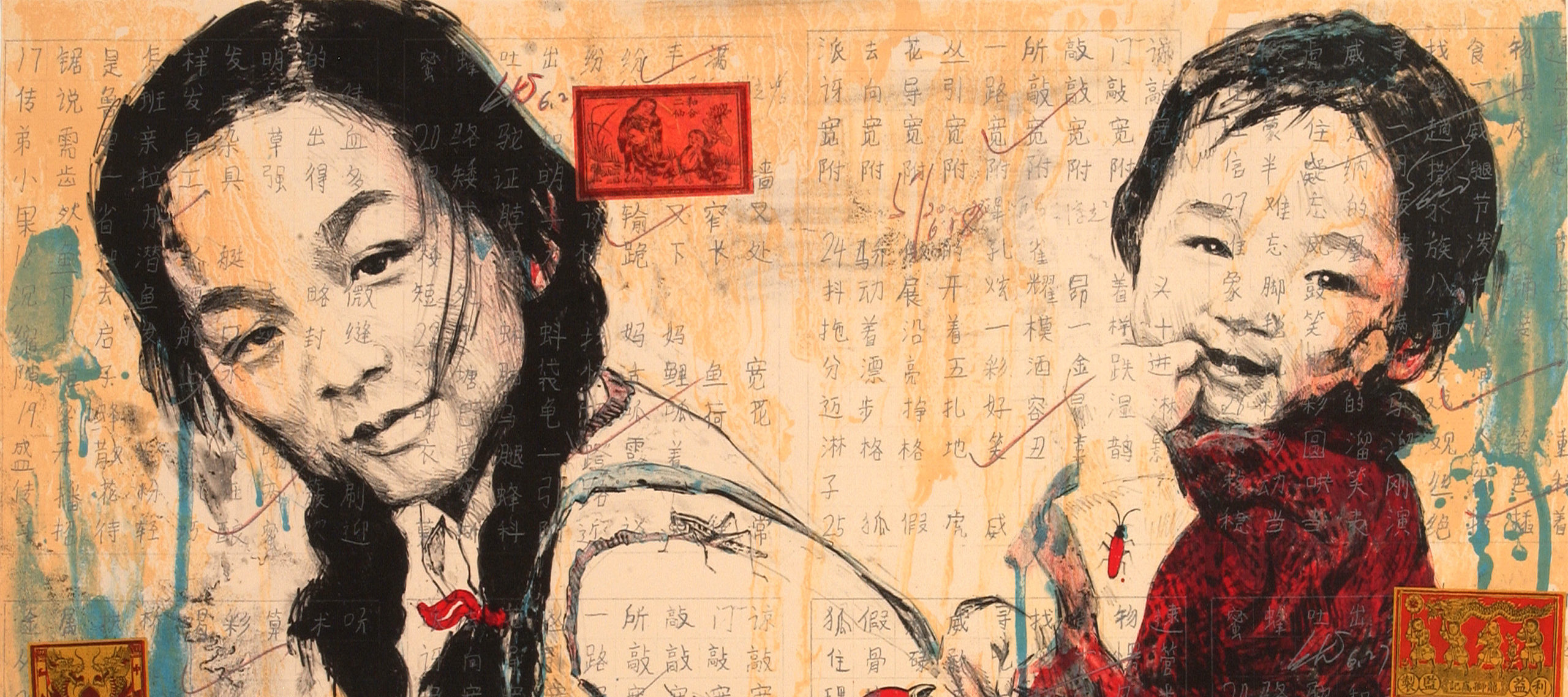WASHINGTON—The National Museum of Women in the Arts (NMWA) presents Hung Liu In Print, on view January 19–July 8, 2018. This spotlight exhibition features 16 prints and a tapestry by painter and printmaker Hung Liu (b. 1948). Hung Liu In Print invites viewers to explore the relationship between Liu’s multi-layered paintings and the palpable, physical qualities of her works on paper. Her multifaceted body of work probes the human condition and confronts issues of culture, identity, and personal and national history.
Before immigrating to California in 1984, Liu grew up during Mao Zedong’s Cultural Revolution in China, where she worked alongside fieldworkers and trained as a painter. Adapting figures from historical Chinese photographs, Liu reimagines antique depictions of laborers, refugees and prostitutes.
“While her works make specific historical references, their true subject is the human condition and universal feelings of loss, suffering, compassion and perseverance,” said Assistant Curator Orin Zahra. “Each step of her process is intentional, yet she delights in her lack of control over the end result.”
Best known as a painter, Liu skillfully translates the “weeping realism” that characterizes her canvases into the medium of prints. To make her prints, Liu works collaboratively with master printers who provide technical expertise. She uses an array of printing and collage techniques, developing highly textured surfaces, veils of color and screens of drip marks that transform the figures in each composition. Describing printmaking as “poetry,” Liu emphasizes the spontaneity of the layering process, which allows each image to build organically with each successive layer.
Liu’s compositions incorporate motifs such as flowers, animals, insects and circles, which reference traditional Chinese painting and Eastern philosophies such as Zen Buddhism. Works from her “Seven Poses”series (2005,) which represent 19th-century courtesans, are collaged with images of deities or ancient pottery, while also juxtaposing the women with grasshoppers, birds and cows. Some of these may refer to the artist’s own love of animals, which often symbolize humanity in her works.
The courtesans, known for their beauty, pose invitingly for the viewer in period costumes. Liu often makes reference to the practice of footbinding in her representations of Chinese women, reflecting on societal ideas of women attaining beauty through pain. But these lyrical works evoke much more. By layering the figures with bold colors, patterns and symbols, Liu illuminates these historically forgotten women.
Often venturing into new forms of creative expression, Liu also has experimented with the medium of tapestry. Just as she collaborates with printmakers for her works on paper, she works with an innovative team of textile fabricators to achieve the desired effects of layering. In her tapestries, interwoven, multicolored threads echo her drips and washes of paint or ink. The entwined threads in Rainmaker (2011) appear to drench this anonymous, enigmatic figure in trails of rain. The subject is seen in profile as vivid hues embellish her hair with large dragonflies, Chinese symbols of summer, while rosy blush tones on her cheeks indicate youth and beauty.
The exhibition continues NMWA’s exploration of innovations in printmaking, a medium in which women have worked since at least the sixteenth century.
Hung Liu In Print, presented in the Teresa Lozano Long Gallery of the National Museum of Women in the Arts, is organized by the museum and generously supported by its members.
National Museum of Women in the Arts
The National Museum of Women in the Arts (NMWA) is the only major museum in the world solely dedicated to championing women through the arts. With its collections, exhibitions, programs and online content, the museum seeks to inspire dynamic exchanges about art and ideas. NMWA advocates for better representation of women artists and serves as a vital center for thought leadership, community engagement and social change. NMWA addresses the gender imbalance in the presentation of art by bringing to light important women artists of the past while promoting great women artists working today. The collections highlight painting, sculpture, photography and video by artists including Louise Bourgeois, Mary Cassatt, Frida Kahlo, Shirin Neshat, Faith Ringgold, Pipilotti Rist and Élisabeth Louise Vigée-LeBrun.
NMWA is located at 1250 New York Avenue, NW, in Washington, D.C. It is open Mon.–Sat., 10 a.m.–5 p.m., and Sun., noon–5 p.m. Admission is $10 for adults, $8 for visitors 65 and over and students, and free for NMWA members and youth 18 and under. Admission is free the first Sunday of each month. For information, call 202-783-5000, visit nmwa.org, Broad Strokes Blog, Facebook, Twitter, or Instagram.
